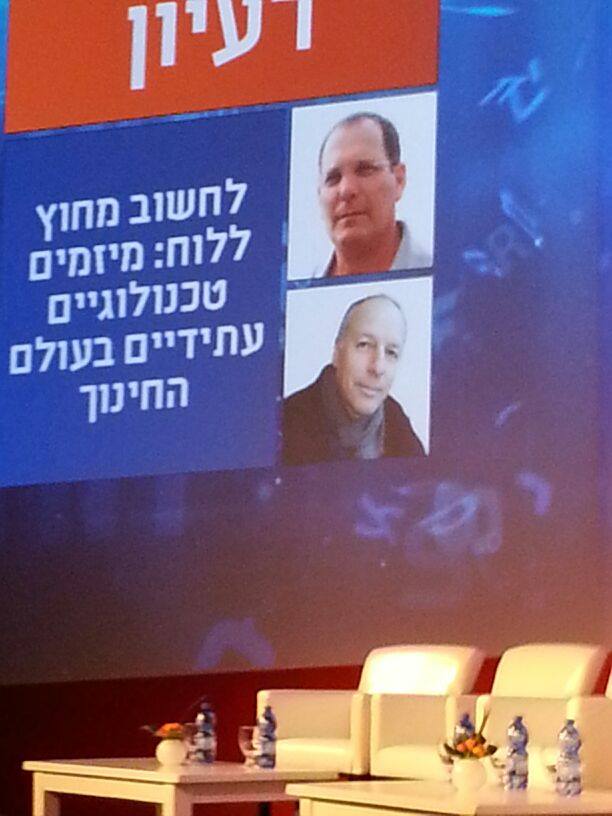Scientist-led conferences at Harvard, Stanford and MIT
-
“Passive sensor” home health monitoring platform launches
http://www.irc-sphere.ac.uk/ The Universities of Bristol, Southhampton and Reading have launched their long anticipated continuous monitoring Sensor Platform for Healthcare in a Residential Environment (SPHERE). The system will detect overnight or mini-strokes by noticing small changes in behavior or expression. It can be used to identify the early stages of heart disease, dementia, diabetes, depression and…
-
Microscale torsional muscle system can simulate active neuromuscular system
http://newscenter.lbl.gov/news-releases/2013/12/19/a-micro-muscular-break-through/ U.S. Department of Energy and Lawrence Berkeley National Laboratory researchers have developed a micro-sized robotic torsional muscle/motor made from vanadium dioxide. For its size, it is a thousand times more powerful than a human muscle, able to catapult objects 50 times heavier than itself over a distance five times its length within 60 milliseconds. “Multiple…
-
Crowdfunded 3-D augmented reality glasses aim to compete with Google Glass
https://www.spaceglasses.com/ For several months, after a successful Kickstarter campaign, Meta has been developing augmented reality glasses “that combine the power of a laptop and smartphone in a pair of thick Ray-Bans and a small pocket computer.” The Meta Pro will have an i5 CPU, 4GB of RAM, 128 GB of storage, Wi-Fi 802.11n and Bluetooth 4.0 connectivity.…
-

EEG patch monitors attention in students
http://www.calcalist.co.il/local/articles/0,7340,L-3619747,00.html http://www.calcalist.co.il/local/articles/0,7340,L-3620186,00.html Professor Nathan Intrator of Tel Aviv University’s Blavatnik School of Computer Science and Sagol School of Neuroscience, and Guy Levi, Chief Innovation Officer of Israel’s Center for Educational Technology are disrupting education through brain science. In an attempt to improve learning abilities in children with attention issues, Intrator and Levi attach a patch…
-
fMRI shows emotional reactions in vegetative patients
http://www.plosone.org/article/info:doi/10.1371/journal.pone.0074711 Using fMRI, Tel Aviv University and Sourasky Medical Center’s Haggai Sharon, Yotam Pasternak, Talma Hendler and colleagues have shown that the brains of patients in a vegetative state emotionally react to photographs of people they know, as though they recognize them. “We showed that patients in a vegetative state can react differently to different stimuli in the…
-
Medical students simulate surgery on 3-D printed brains
http://www.npr.org/blogs/health/2013/12/16/250577798/novice-neurosurgeons-train-on-brains-printed-in-3-d University of Malaya neurosurgeons use 3-D printers to make realistic skulls and brains for surgical residents. The models combine different materials to mimic the feel of human bone, membrane and tissue. Each practice patient is made to order from the scans of an actual patient, so students can attempt the same procedures as senior…
-
Year end review of “neuromorphic” chip prototypes
http://www.technologyreview.com/featuredstory/522476/thinking-in-silicon/ MIT Technology Review today features an overview of processors that they claim are “about to narrow the gulf between artificial and natural computation—between circuits that crunch through logical operations at blistering speed and a mechanism honed by evolution to process and act on sensory input from the real world.” Caltech’s Carver Mead pioneered “brain…
-
Orthopedic surgeons “draw” regenerating bone material on body with “BioPen” prototype
http://media.uow.edu.au/news/UOW162803 Researchers from the Australian Research Council Centre of Excellence for Electromaterials Science at the University of Wollongong unveiled a prototype of an orthopedic surgery aid they call “BioPen”. They claim that it enables customized implants to be created at the time of surgery, eliminating the need to harvest cartilage and grow it for weeks in…
-
Nerve interface simulates touch in prosthetic hand
http://www.technologyreview.com/news/522086/an-artificial-hand-with-real-feelings/ Cleveland Veterans Affairs Medical Center and Case Western Reserve University researchers have developed an interface that can convey a sense of touch from 20 spots on a prosthetic hand. It directly stimulates nerve bundles, known as peripheral nerves, in the arms of patients. Two people have been fitted with the interface to date.…
-
Brain scan for Alzheimer’s diagnosis
http://www.imperial.nhs.uk/aboutus/news/news_042335 Tomorrow, London’s Imperial College will be the first to perform a brain scan which could lead to more accurate diagnosis of Alzheimer’s disease and other dementias. The test involves giving the patient a small amount of a radiopharmaceutical which binds to amyloid plaques, showing them in a brain scan. Amyloid plaques in the brain are…
-
Imaging technology identifies signs of chronic brain injury in living football players
http://www.technologyreview.com/news/522126/identifying-signs-of-chronic-brain-injury-in-living-football-players/ Until now, chronic traumatic encephalopathy, caused by repetive head injury, could only be identified after a victim died. CTE is linked to depression, dementia, and memory loss. A new imaging method, developed by Pittsburgh Steelers physician Julian Bailes and UCLA researchers, can for the first time spot signs of the condition in the living brain. It…
-
Nerve impulse sensor exoskeleton assists paraplegics, Parkinson’s, stroke patients
http://www.dw.de/standing-again-with-nerve-controlled-robotics/a-17280419 Professor Thomas Schildhauer leads a team at Bergmannsheil University Clinic’s “Center for Neuro-Robotic Mobility Training” that uses nerve impulse sensors to help patients walk again. A robotic exoskeleton with sensors affixed to the hips and legs gives paraplegics, Parkinson’s and stroke patients a sense of stability during ambulatory exercises. The robot suit contains numerous sensors that…
Got any book recommendations?